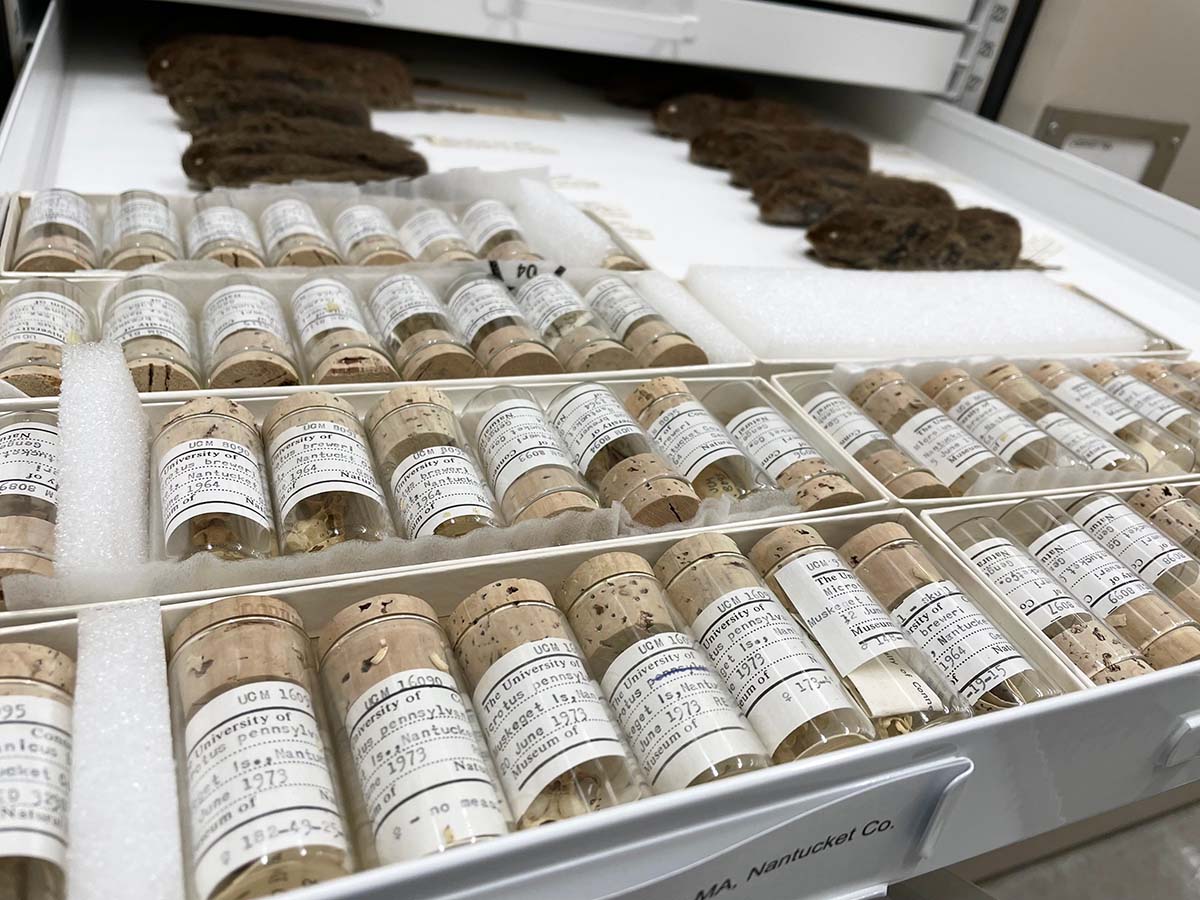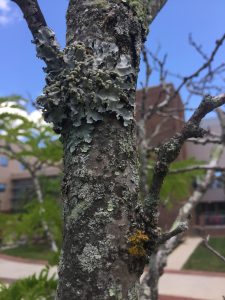 Schlis-Elias, M. C. & J. L. Malaney. 2022. Island biogeography predicts skull gigantism and shape variation in meadow voles (Microtus pennsylvanicus) through ecological release and allometry. Oikos 2022: e08777 pdf (doi: 10.1111/oik.08777).
Schlis-Elias, M. C. & J. L. Malaney. 2022. Island biogeography predicts skull gigantism and shape variation in meadow voles (Microtus pennsylvanicus) through ecological release and allometry. Oikos 2022: e08777 pdf (doi: 10.1111/oik.08777).
The authors investigated the Island Rule (a pattern of gigantism in animal species on islands that are small-bodied on the mainland and dwarfism among island species that are large-bodied on the mainland) using meadow vole (Microtus pennsylvanicus) specimens from the UCONN BRC mammal skull collection. Schlis-Elias and Malaney used 21 dorsal cranium landmarks and 25 ventral cranium landmarks to quantify vole skull sizes in eleven island and three mainland populations in northern Atlantic and Pacific coastal regions. They did find strong evidence of the Island Rule in meadow voles: the smallest islands had the largest voles! This size disparity is related to ecological release: insular populations of meadow voles encounter few predators compared to their mainland counterparts.
All data from this paper are openly accessible and available on DRYAD (https://datadryad.org/stash/dataset/doi:10.5061/dryad.jdfn2z3cj).
In total, 31 UCONN M. pennsylvanicus specimens were used in this work and we are excited to continue our collaboration with the authors in their future research endeavors!





 Vertebrate Collections Manager in the BRC, Dr. Erin Kuprewicz was recently highlighted in a UConn Today
Vertebrate Collections Manager in the BRC, Dr. Erin Kuprewicz was recently highlighted in a UConn Today  As the summer graduate assistant in the herbarium, Vandana Gurung (EEB graduate student, Diggle lab) facilitated the distribution of over 2,000 duplicate herbarium specimens collected by Les Mehrhoff, former collections manager of the G.S. Torrey Herbarium (CONN). Vandana’s work involved comparing a list of Mehrhoff’s collection numbers against a spreadsheet of the 22,000+ Mehrhoff collections already accessioned in the herbarium, identifying collection numbers that do not appear in the master spreadsheet (i.e., specimens filed as “duplicates” that were never mounted and added to the herbarium), and linking the remaining numbers to existing collection data from the database. She prepared excel spreadsheets of collection data which were used to generate rough drafts of over 2,000 labels, and then edited each label to eliminate replicated locality data and to ensure correct formatting. Vandana’s efficiency with R and attention to detail while editing labels expedited the transformation of several herbarium cabinets’ worth of material from mystery specimens to organized, labeled duplicates ready for distribution to other collections once covid-19 shipping restrictions are lifted.
As the summer graduate assistant in the herbarium, Vandana Gurung (EEB graduate student, Diggle lab) facilitated the distribution of over 2,000 duplicate herbarium specimens collected by Les Mehrhoff, former collections manager of the G.S. Torrey Herbarium (CONN). Vandana’s work involved comparing a list of Mehrhoff’s collection numbers against a spreadsheet of the 22,000+ Mehrhoff collections already accessioned in the herbarium, identifying collection numbers that do not appear in the master spreadsheet (i.e., specimens filed as “duplicates” that were never mounted and added to the herbarium), and linking the remaining numbers to existing collection data from the database. She prepared excel spreadsheets of collection data which were used to generate rough drafts of over 2,000 labels, and then edited each label to eliminate replicated locality data and to ensure correct formatting. Vandana’s efficiency with R and attention to detail while editing labels expedited the transformation of several herbarium cabinets’ worth of material from mystery specimens to organized, labeled duplicates ready for distribution to other collections once covid-19 shipping restrictions are lifted.